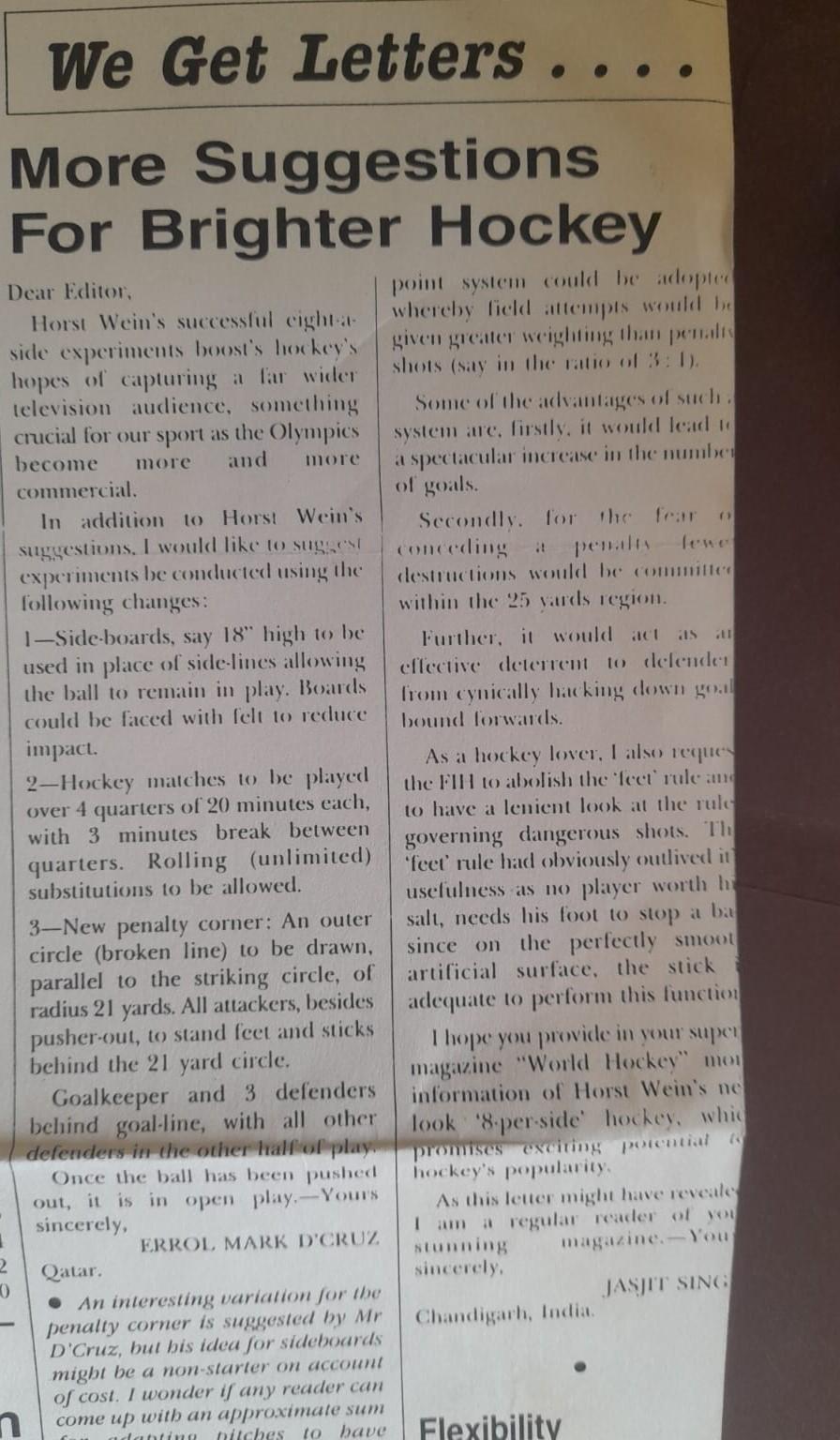Share
Errol D’Cruz
Are we going back to the future? It might seem so. At least going by the FIH’s initiative to tweak the penalty corner in the wake of concerns about player safety and the need for brighter scoring.
In a communiqué, the world body has called for the trial of the PC in which the injected ball must cross the outer dotted circle five yards parallel to the striking circle before it’s moved back in for a goal to be scored. Another change restricts attackers to stand behind the dotted circle at the time of injection at a PC. All other aspects of the PC would remain the same according to the communique.
Sounds familiar, doesn’t it? At least for those old enough to remember.
At the turn of the millennium, the same routine was carried out as a mandatory experiment but not at the international level. It was dropped when it encouraged defenders to commit the “professional foul” as the new-look set-piece was far less potent than the one it sought to replace.
This writer was one who started off being enthusiastic about the modification, delighted by World Hockey publishing his suggestion in a 1991 edition. However, it soon dawned that it wasn’t the brightest of ideas as PCs were soon shaped as insufficient retribution, given the increased degree of difficulty to score from the set piece. After all, a direct shot (including the lethal drag-flick) was knocked off the equation by the stipulation that the injected ball be sent five yards out of the circle.
Worse, defenders weren’t too perturbed conceding a PC and many a deliberate, often disguised, infringement didn’t quite make for justice via the modified set piece award.

Errol D’Cruz’s letter to World Hockey Magazine in 1991
The FIH’s motive now is to reduce danger at the PC and to have additional protective equipment done away with — face masks for outfield players (defenders on the line), knee and abdominal guards.
It also strives, two decades or so earlier, to stifle the penalty corner assassin, notably now the drag-flicker, and create a more open-play situation at the set-piece.
However, it appears that experimentation with the new PC is optional and not mandatory as the one more than two decades ago. If it succeeds, would it mean goodbye to the drag-flickers who have been pivotal to success for more than three decades?
Another question: Why would the FIH want to repeat a failed experiment? Perhaps because the PC, even in its current format, has become less potent, thanks to improved defence at the set-piece. The Netherlands, for instance, haven’t been the masters of the PC they once were and have even admitted to focusing on circle penetration rather than forcing the once dreaded set-piece.
Also, with suspensions telling heavily on a team’s work rate, especially in the era of the self-pass (introduced some 15 years ago) which has sped up the game several notches, a yellow card for a deliberate offence leading to a PC could be an effective deterrent to refrain from the professional foul.
Ironically, the modified PC was vetoed after the mandatory experimental period of two years, even after a severe injury sent a South Korean “first-runner-out” to hospital during the 2000 Olympic semi-final against Pakistan whose keyman was drag-flicker Sohail Abbas.
The injury inspired equipment manufacturers to come up with face masks and knee guards for defenders at the PC. It also prompted the rule makers to stipulate that a defender rushing out to foil the corner striker must not put his/her body in the line of the shot.


